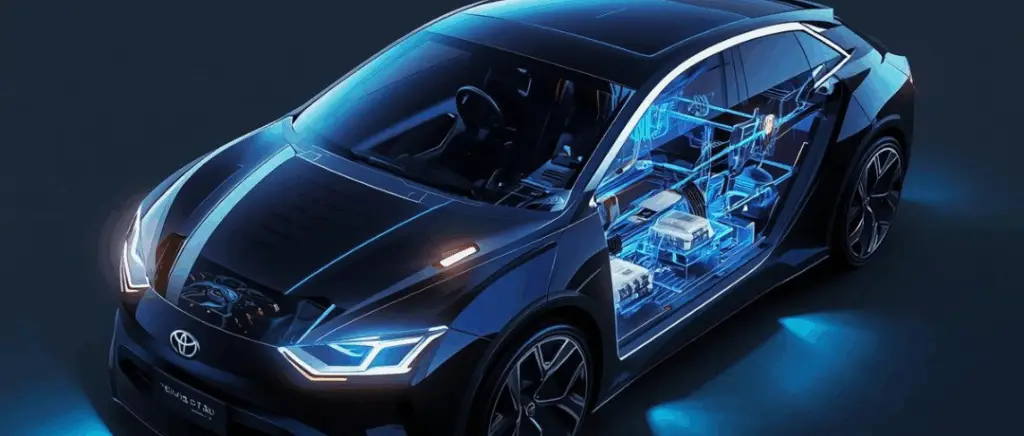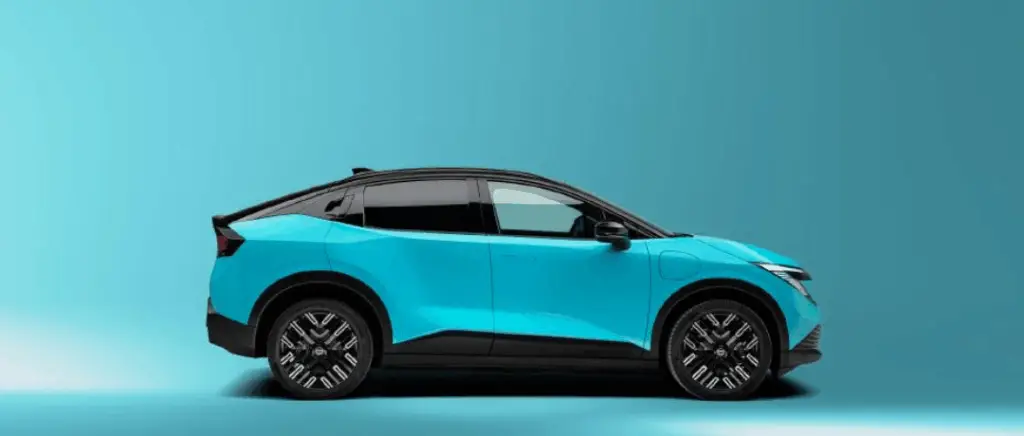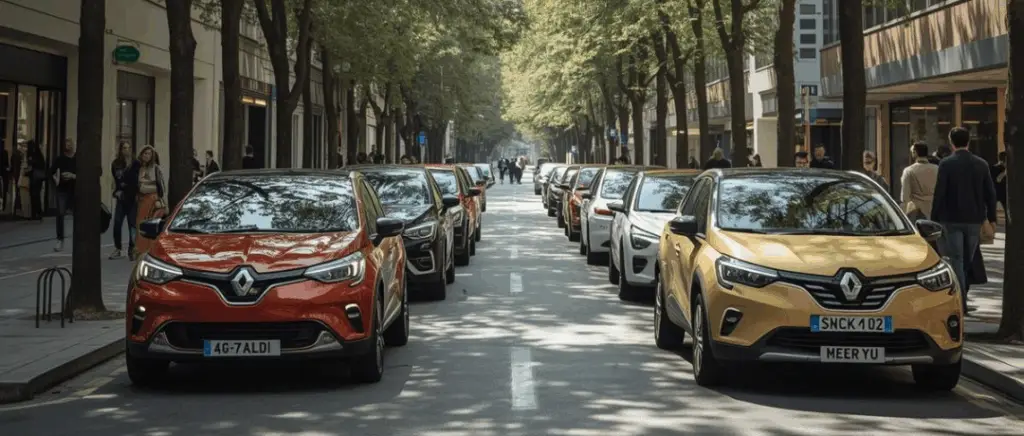Our experts answer your questions with a smile
Monday to Friday 9am - 12.30pm - 2pm - 7pm
Discover our new must-have guide :
What is an electric charging point?
An electric charging point is a device for recharging an electric vehicle.
To make the right choice, you first need to understand how recharging works, and then choose a product that is suitable and safe for your needs, so that it is efficient and cost-effective.
According to Avere France, in April 2024 there will be 1 charging point for every 15 charging sessions for electric and plug-in hybrid vehicles in France. All in all, this represents almost 130,000 charging points open and accessible to the public.
- For personal use, you need to find the right electric charging point for your vehicle to optimise your costs and get a high-performance charge that suits your lifestyle.
- Installing an electric recharging point on company premises allows employees to recharge their vehicles or even to recharge the company's electric vehicles. vehicle fleet. This means supporting the company's employees in the transition to green mobility and offering a recharging solution to its customers.
- For shops, hotels and restaurants, installing recharging points is a way of attracting new customers and building loyalty among electric car customers.
Individuals can take full advantage of the network of public and private electric charging points at work. That's why a charging point with a lower power rating is sufficient for the home.
The companies are key players in the emergence of electric vehicles. By setting up recharging facilities, they are encouraging their employees to opt for this 'cleaner' mode of transport.
Understanding recharging means first and foremost mastering the factors that influence recharging: recharging methods, types of cables/plugs. This will help you determine the power and charging time you need, so you can make the right choice for your business. We explain it all to you!
Become an ace electrician
In order to choosing your charging point To ensure that your electric vehicle is suited to your needs, you need to be familiar with the various concepts that influence recharging.
Power output (kW) = tap water flow rate
-> Example: An 11 kW AC three-phase electric recharging point.
Electric vehicle recharging power generally varies between 3 and 350 kW today.
Capacity (kWh) = capacity of a bathtub in L. It corresponds to the quantity of energy consumed by the charging point and supplied to the electric vehicle in kWh.
In theory, if I plug my car into a 22 kW AC socket for an hour, I have recovered 22 kWh.
For example: the maximum charging capacity of the Kia eNiro is 11 kWh. In this case, a mode 3 charge via a wallbox single-phase: 11 kW is sufficient and saves 70 km of electricity.autonomy per hour of charging. The Kia recovers 11 kWh in one hour. However, if the Kia eNiro is plugged into a three-phase AC terminal that delivers 22kW, the Kia will only be able to recover 11 kWh per hour of charging. It will take around 6 hours to recharge the battery.
What is the difference between AC and DC current?
Refill in alternating current (AC)
Le alternating current corresponds to the current that circulates in the electricity network. And yet, the battery in an electric vehicle can only store DC electricity (DC).
AC/DC converter
To remedy this, a AC/DC converter is present under the bonnet of the vehicle and transforms alternating current into direct current before it is stored in the battery. This is why the recharge time is longer. The AC charging generally offer a charge normal to accelerate (up to 22 kW) but can sometimes up to 43 kW.
Direct current (DC) charging
Terminals delivering direct current offer a fast to ultra-fast charging (up to 350 kW). The AC/DC converter is built directly into the terminal, delivering direct current and powering the vehicle's battery instantly.
What are the different types of cable?
To ensure that there's something for everyone, we need to know about the different types of cable so that we can offer the most suitable ones for businesses or public car parks, and whether or not to invest in home charging for private individuals.
→ If the cable used to recharge is not suitable, the power may also be limited.
→ On DC terminals, a cable must be attached to the terminal.

Type 1 and type 3 sockets are no longer used in France!
Socket type 2: Standardised European socket (max power 43 kW)
Europe has decided to make the type 2 plug the standard model.It delivers power ranging from 3 to 43 kW (3 to 22 kW for private spaces).
Its versatility means it can be used for all common recharging scenarios, in particular with a Wallbox at home and at public fast-charging stations.
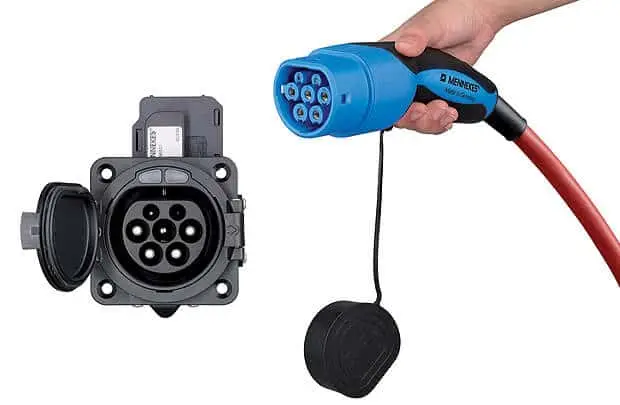
The Type 2 plug is the most commonly used model and has replaced the Type 3 plug since January 2016.
This cable accepts both single-phase and three-phase alternating current. The car can be charged at home, at public charging points, at rental companies or in car parks. The type 2 socket is compatible with normal accelerated charging.
Type 4 socket or CHAdeMO (Max power 100 kW)

The type 4 socket, also known as CHAdeMO, is used for fast charging. This fast-charging system was developed in Japan and allows charging capacities of up to 100 kW at appropriate public charging stations.
Socket CCS combo - Combined Charging System (max power 350 kW)
This plug combines the advantages of the Type 2 plug with those of the CHAdeMO plug. It enables fast recharging up to 350 kW.
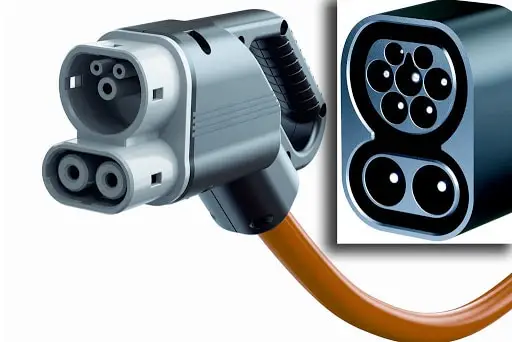
Type 1 socket: The most widespread in the world, but not in Europe
This type of plug is widespread in Asia and the USA, but not very common in Europe. It allows a power rating of up to 7.4 kW (230 V, 32 A), which prevents rapid recharging. Recharging is therefore slow or accelerated, using single-phase alternating current (32 amps for 230 volts).
Type 3 socket: disappearing
This type of plug is not widely used because it was the old standard in France before the arrival of Type 2. Europeans favour Type 2. But there are still some type 3 terminals.
Would you like to install a recharging point?
The 4 charging modes

Slow charge from domestic socket (max power 2.3 kW)
Slow charging from a domestic socket. This is a mode 2 charge that takes place on a non-dedicated socket, i.e. you plug your electric vehicle into any electrical outlet. Charging is done using alternating current with a maximum power of 2.3 kW. Every electric car can be plugged into a domestic socket, but charging time is very slow because there is no circuit to boost the power delivered to the car.
Who is it for? Ideal for private customers who have an electric vehicle with a medium range
How is it used? Recharging at night or when the car is parked for a long time
Advice : Have the electrical system checked by a professional (risk of overheating the plug and electrical cables)
Range recovered per hour of recharging : 10 km
Normal charge on Green'Up socket (max power 3.7 kW)
Mode 2 charging also involves charging on a non-dedicated socket, meaning that you also plug your vehicle into a domestic socket. Green'Up offers a recharging solution halfway between the domestic socket and the Wallbox. It looks like a standard household socket, but with a few improvements in terms of strength and power handling. The Green'up has a charging capacity of 3.7kW on alternating current.
Who is it for? Vehicle with average range. Ideal for home recharging.
How is it used? Recharging at night or when the car is parked for a long time
Range recovered per hour of recharging : 15-20 km
Normal fast charging with a wallbox (up to 22 kW)
Normal recharging with acceleration is mode 3 recharging, which delivers
3 power ratings from 3.7 kW, through 11 kW to 22 kW.
The Wallbox is a wall-mounted box for recharging an electric car. It includes an electronic box that controls all aspects of recharging. With programming options available, the Wallbox has a dedicated electrical circuit capable of delivering more than twice the power of a standard domestic socket.
There is a very wide range of products with options such as power regulation, remote control, consumption data recording and consultation via an integrated screen, locking and access control.
How is it used? During the day when the vehicle is parked. Usage depends on the power selected. 7.4 kW for parking for several hours
Autonomy recovered per hour :
3.7 kW: 15-20km
7.4 kW: 30-40 km
11 kW: 60-70 km
22 kW: 100-150km
Installation? Installation by a professional
is not compulsory but strongly recommended
Who is it for? Individuals or professionals
Fast recharging with a charging point (up to 350 kW)
Fast recharging corresponds to mode 4 and is carried out via a "totem" station.
It can also be recharged using direct current, which means fast recharging. In this case, you'll need a CCS or CHAdeMO cable.
This type of charging station can be found in public places and car parks. The price of the charging point is high, so the cost of recharging is higher, but you can recharge your vehicle in a very short time.
How is it used?Very short parking times
Autonomy recovered per hour :
over 200 km (between 200 and 2000 km)
Who is it for? Professionals and local authorities in a public or company car park vehicles do not have time to park for long periods
Installation? Installation by a professional is compulsory
For which types of vehicle?
The charging points on the market today all have a Type 2 socket for normal charging or a CCS socket for fast charging, the European standards for charging electric vehicles. However, French law also preserves the CHAdeMO, a Japanese standard used on the first electric vehicles (on no new vehicle in Europe except the Lexus ux300e and the Nissan Leaf) until 2024. The electric charging point you install, whether a wallbox or a terminal, will therefore be compatible with all electric cars on the market.
How do you choose your electric charging points?
An electric charging point can recharge up to 10 times faster than a domestic socket, and in complete safety. So it's important to choose robust equipment from recognised brands, because charging points installed in a business are subject to intense use. For home recharging, a green'up plug (3.7 kW) is sufficient if you want to recharge at night. If you only have a short parking time, you can opt for a low-power wallbox (7.4 kW).
Does the charging point depend on the electric vehicle?
Yes, you need to take into account the information explained above (recharging capacity, recharging cable, etc.).
What type of electric charging point should I choose?
At home, the domestic socket, the green'up socket or a low-power wallbox may be solutions. You'll need to think about how long you can park your vehicle.
For an office site, wallbox-type kiosks, either wall-mounted or free-standing, are recommended. Easy to install and taking up less space, they are very popular with businesses. You can charge 2 electric cars at the same time!
For a shopping centre or high-traffic site, it is advisable to install "totem" chargepoints. These chargepoints offer up to two charge points and additional functions such as payment.of the charging session by credit card.
Conclusion
Electric cars mean electric charging points! These different ways of doing things will help you choose the best solution for your needs. recharge you need! Aids are available to facilitate the purchase of an electric charging point.
If you would like to find out more aboutsupport for the installation of charging points for private customers in 2024For more information, see our article on this subject.































